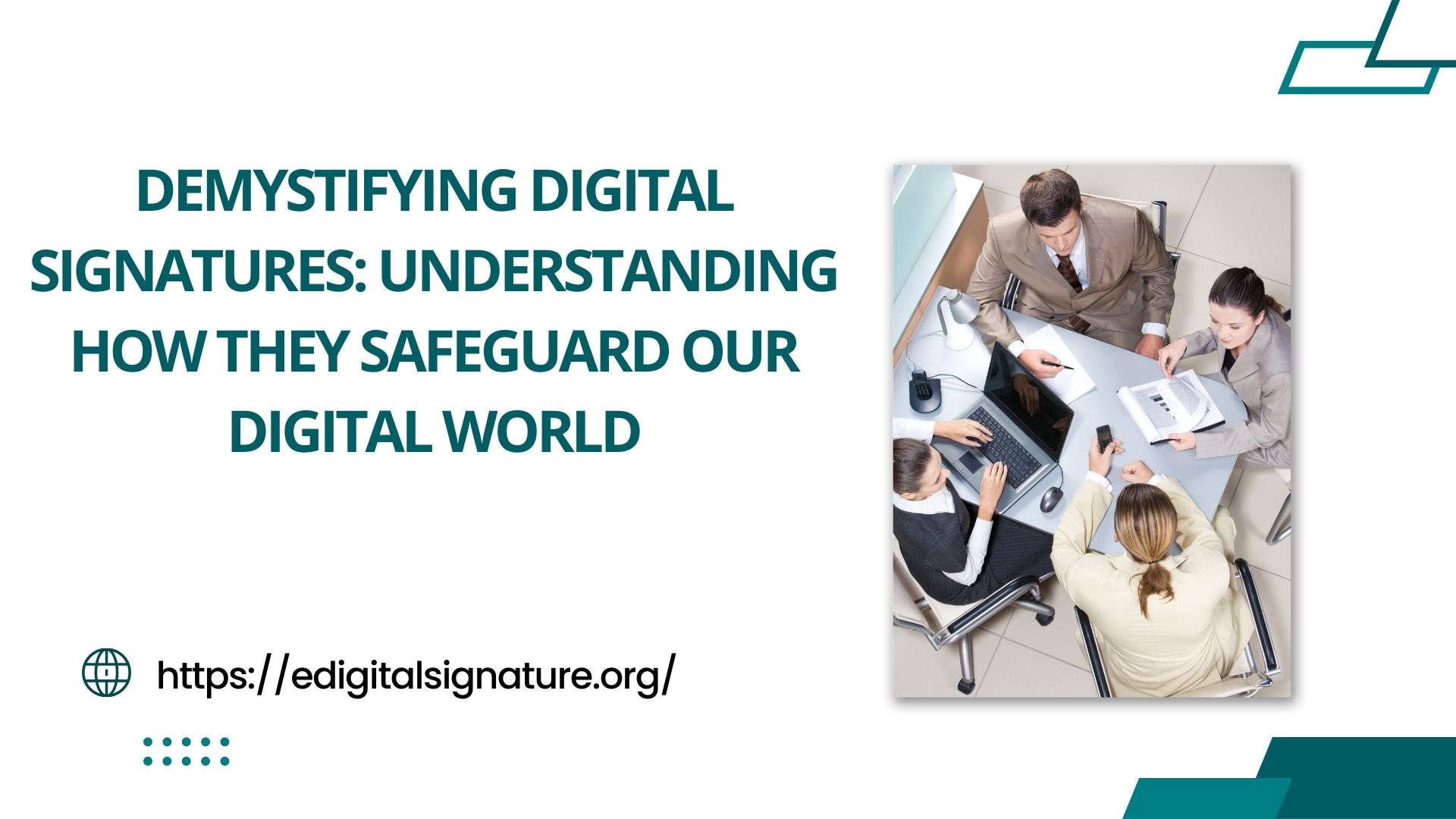Introduction
In our increasingly interconnected digital age, ensuring the security and authenticity of digital documents, transactions, and communications is of paramount importance. Enter the digital signature, a cryptographic technology that serves as a cornerstone in the world of digital security. In this article, we will delve into the fascinating world of digital signatures, exploring what they are, how they work, and why they are essential for maintaining trust and integrity in our online interactions.
The Basics of Digital Signatures
A digital signature is a mathematical technique used to verify the authenticity and integrity of digital messages or documents. It serves the same purpose as a handwritten signature does in the physical world—providing proof of the identity of the signer and ensuring that the content of the message or document has not been altered since the signature was applied.
Digital signatures are based on asymmetric cryptography, which involves the use of a pair of cryptographic keys: a private key and a public key. These keys are mathematically related but computationally infeasible to derive one from the other. The private key is kept secret by the signer, while the public key is openly available to anyone who wishes to verify the signature.
How Digital Signatures Work
The process of creating and verifying a digital signature involves several steps:
Key Generation: The first step is to generate a key pair consisting of a private key and its corresponding public key. The private key must be securely stored by the signer, as it must never be shared with anyone else.
Signing: To sign a document, the signer applies a cryptographic algorithm to the document using their private key. This generates a unique string of characters known as the digital signature. This signature is specific to both the document and the private key of the signer.
Verification: The recipient or anyone wishing to verify the authenticity of the document uses the signer’s public key to validate the digital signature. The verification process involves applying a mathematical algorithm to the digital signature and comparing the result with the original document. If the two match, the signature is considered valid, and the document’s integrity and authenticity are confirmed.
Ensuring Security and Integrity
One of the fundamental challenges in using digital signatures is ensuring the security of the private key. If the private key falls into the wrong hands, an attacker could forge digital signatures and impersonate the legitimate signer. Therefore, robust key management practices are essential, such as using hardware security modules (HSMs) or secure key vaults to safeguard private keys.
Additionally, to prevent document tampering, digital signatures are typically accompanied by a hash function. A hash function takes the digital document as input and generates a fixed-size output (the hash value). This hash value is then signed using the private key, producing the digital signature. When the recipient verifies the signature, they recompute the hash value from the received document and compare it with the decrypted hash value from the signature. If the two hash values match, the document is considered intact and unaltered.
Advantages of Digital Signatures
Digital signatures offer several advantages, making them a preferred choice for secure online transactions and communications:
Authentication: Digital signatures provide strong authentication, as the association between the signer and the signature is cryptographically bound. This helps prevent impersonation and ensures that the origin of the document is genuine.
Non-repudiation: Once a document is digitally signed, the signer cannot deny their involvement. This property is known as non-repudiation and is crucial in legal and contractual contexts.
Integrity: Digital signatures ensure the integrity of the signed documents. Even minor changes to the content of the document would result in an invalid signature during verification.
Efficiency: Compared to traditional paper-based signatures, digital signatures streamline the signing process, reducing the time and effort required for authentication.
Digital Signatures in Practice
Digital signatures are widely used in various applications, including:
E-commerce: Digital signatures play a vital role in ensuring the security of online transactions, providing customers with confidence that they are interacting with legitimate entities.
Government and Legal Documents: Governments often use digital signatures to authenticate legal documents, ensuring their validity and origin.
Software Distribution: Digital signatures are employed to verify the authenticity and integrity of software updates, reducing the risk of distributing malicious code.
Email Communication: Digital signatures can be applied to emails, ensuring that the sender’s identity is verified and the message remains unaltered during transit.
Suggested Read: Class 3 Digital Signature
Conclusion
Digital signatures are a crucial aspect of modern digital security, enabling secure communication and transactions in the online world. By leveraging asymmetric cryptography and cryptographic hashing, digital signatures provide robust authentication, integrity, and non-repudiation. While they are not impervious to all forms of cyberattacks, proper key management and secure implementation go a long way in mitigating risks and ensuring the effectiveness of digital signatures. As technology continues to evolve, digital signatures will remain a fundamental tool in safeguarding the trust and integrity of our digital interactions.
Re




